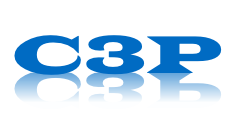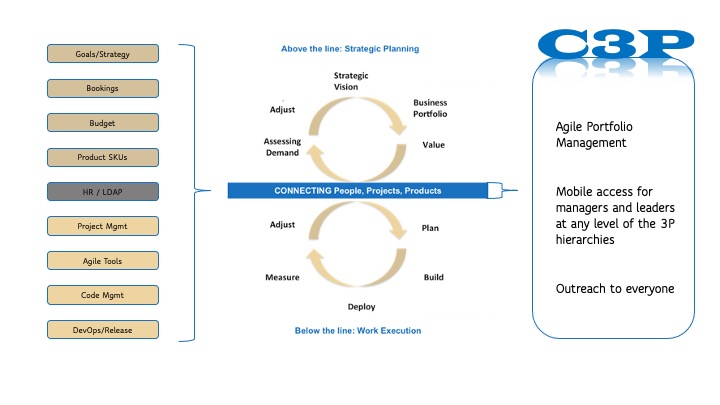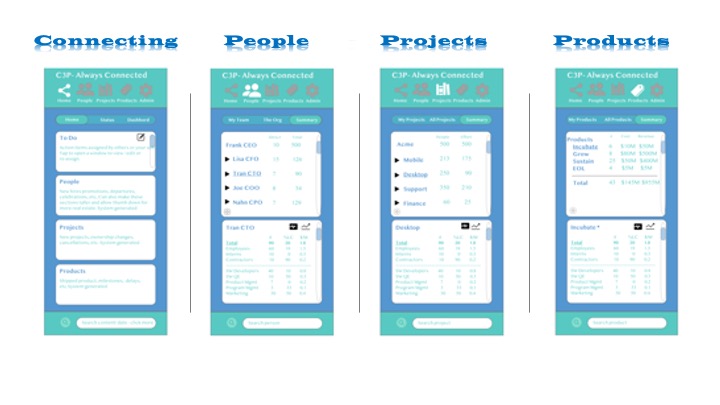Agile portfolio management for R&D organizations enabling investment in what matters.

Connecting strategic planning and work execution opens the door to new untapped data sets.
Vision and value proposition
Agile portfolio management for R&D organizations enabling investment in what matters.
The problem
In larger software organization you rarely find a common resource tracking tool that captures allocations across all projects and products, and is linked to the strategy/goals and financial tools. Hence, there is a data gap between strategy and execution. There are typically many different tools used in pockets to plan and mange people, projects, and products, such as MS Project, MS teams, SharePoint, Excel, Jira, SmartSheet, Clarizen, SAP, Confluence, Slack, Monday.com, etc. These tools offer broad and rich features that requires a steep learning curve & continuously upholding of best practices. Most of them are calendar-focused (tracks time) which leads to feature complexity and is something everybody really dislikes. Further, many groups don’t use any project tools at all such as managers, central groups, product marketing, etc. As a result, most companies struggle to understand where they are investing resources. As one Adobe VP said: “Trying to understand what people are working on is the most difficult thing we have ever done.”
In summary: There is no easy way to obtain a complete, timely and accurate view of how people are allocated across efforts. This makes portfolio (people, projects, products) management a “paper-exercise” done once, maybe twice, per year. Resulting in waterfall portfolio management with inaccurate, bygone data with weak ties to strategy & objectives, leaving decision-makers with untapped insight into their own R&D organizations.
Target market and opportunity
Mid to large companies conducting R&D (organizations of 100+ people). Key users of this solution are GMs, VPs, Chief of Staffs, Ops Teams, program managers and Finance.
While at Adobe and VMware, I successfully designed, developed and deployed portfolio management solutions in the R&D organizations. Now at Amazon, I’m tackling the same challenge. In addition, last year, I reached out to my network of VPs and Chief of Staffs in the Bay Area (Google, Salesforce, Applied Materials, Palo Alto Network, Facebook and more) to validate the need. Here are some of the responses to the agile portfolio management idea:
“Fantastic! We need this both for R&D and the Sales group. How can we help moving this forward?”
“Problem resonates. We do not use portfolio management solution due to complexity and lack of results.”
“Analysis spot on. It is a challenge we are trying to resolve. Very interested.”
“Problem resonate. Have not seen anything that can solve this. Would like to stay connected with progress.”
“Super important when scaling! Every GM and CoS will need this as there is no tool or standard for getting this done. Willing to help design and establish best practices.”
The solution (Connecting, People, Projects and Products – C3P)
Portfolio management in the palm of your hand: access to real-time data
Level 1: Simple Outreach to Everyone (enter or review data from execution tool-sets)
- Mobile app to review and update project allocations (%) when there is a significant change
- Total time to review and update for a typical user is two minutes per month, covering 90% of the use across the org
Level 2: Complete and Timely Access for Managers and Leaders
- In the palm of your hand: access data about any person, any project and product in any meeting at any time
- Rolled-up data available at any level of the person, project and product hierarchies (3P)
- Capture status and action items at any node at any level (3P)
Level 3: Agile Portfolio Management
- Connecting 3P to additional systems (budget, bookings, strategic priorities, lifecycle, analytics) for complete analysis
Questions that now can be answered: What is everyone working on? What is the latest status related to any person, project or product? What resource allocation changes are we asking employees to implement? Are employees working on projects that are linked to critical company objectives? What is the overall capacity across functions and groups? What is the typical cost of a project? What is the ROI on any release? What are investments in the various categories (new, grow, maintain, slow)? What are the distribution of roles and functions across the globe? What is our geographic cost vs capability profile? And of course, the biggest opportunity is to use this data set to make better R&D decisions by linking it to data analytics toolsets that can provide recommendations and discover insight into the overall portfolio and improve decision-making.
Team
Nils Erik Boe, product development and portfolio management experience from Apple, Adobe, Amazon and VMware. Next critical role needed is a GTM lead (positioning, demand & sales).
Competition
MS Project, MS teams, SharePoint, Jira, SmartSheet, Clarizen, SAP, Confluence, Slack, Monday.com, etc. are typically focused on time as the currency of effort. This is a non-starter for most R&D organizations (complexity and dislike).
Images and Visuals
The first image is an overview of where C3P fits into the data landscape. The second image shows the four key pages in the mobile application. Clickthrough demo is available.






I completely agree Erik that this tool is needed and overdue in the market.